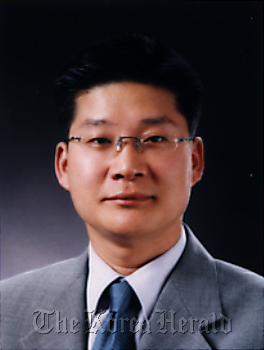Following is the second in a series of articles featuring the Korea-U.S. Free Trade Agreement which marks the first year after its effectuation on March 15, 2012. ― Ed.
The Korea-U.S. FTA, initially launched amid worries and expectations, will mark its first anniversary this week. Following a supplemental negotiation in December 2010 ― where in exchange for delaying U.S. tariff eliminations on Korean auto exports for four years, Korea’s tariff phaseout on frozen pork imports and implementation of an approval-patent linkage system for generic pharmaceuticals were respectively granted a postponement of two and three years ― the bilateral FTA took effect on March 15, 2012, nearly five years after its original signing in June 2007.
Thanks largely in part to its trade agreements with the U.S., not to mention those with major economic blocs such as the EU and ASEAN, Korea surpassed the trillion-dollar mark in trade volume for two consecutive years and became the eighth-largest trading power in 2012, despite sluggish exports from the global economic slowdown.
Accounting for 21.9 percent of global GDP, the U.S. has an economic size of $15.7 trillion, and is also the largest importer in the world, with 13.1 percent of the global import market. In 2003, the U.S. ceded its position to China as Korea’s No. 1 export destination, after having maintained the top spot for almost 50 years. However, it still remains to date as Korea’s second-largest export market, constituting 10.7 percent of Korea’s total export volume.
Over the years, the Korea-U.S. FTA generated a great deal of attention for its potential impact on job creation and economic growth. But as the global economy continues to struggle from the ongoing European sovereign debt crisis and the U.S. fiscal cliff, Korea’s exports to the U.S. grew by 1.8 percent, reaching $57 billion in 2012 (estimate from March 2012 to February 2013), while imports from the U.S. fell 9.4 percent to $41 billion. As a result, Korea’s 2012 trade surplus with the U.S. surged to its highest level yet, increasing by $5.2 billion to $16 billion. Trade was especially active in goods that now enjoy preferential tariff treatment under the bilateral FTA, such as auto parts, tires, synthetic resins and heavy equipment.
The FTA also had a positive effect on cross-border investment. U.S. investments in Korea amounted to $3.7 billion in 2012, showing a year-on-year growth of 54.9 percent in 2012, which is about three times larger than Korea’s average FDI inflow rate of 18.9 percent. Moreover, the U.S. replaced China as Korea’s most favored country for overseas investment since 2008. Last year, Korea invested $6.9 billion in the U.S. market, almost double the amount of U.S. investments in Korea.
FTA utilization by the Korean private sector is also on the rise. Following implementation, corporate utilization jumped from 58.3 percent in April 2012 to 65.4 percent by November.
Last month, President Barack Obama announced in his annual State of the Union speech that the U.S. would soon begin talks on a comprehensive Transatlantic Trade and Investment Partnership, or TTIP, with the EU. Combined, the U.S. and EU account for half the global GDP and one-third of the global trade volume, and negotiations will likely begin in June, with both sides aiming to finalize the agreement by the end of 2014. In addition to tariff reductions, the TTIP will harmonize a barrage of competing regulations and technical standards that interrupt the flow of goods and services, taking up the role of “game changer” by setting global rules that could help strengthen the multilateral trading system.
The good news is, even if this transatlantic trade pact were to be enacted, Korea would still have a comparative advantage over China and Japan. New technological and procedural standards set forth by the TTIP can help reduce transaction costs and stimulate global trade and economic growth, thus providing a more favorable environment for Korean firms to expand exports to both the U.S. and the EU markets. But Korea must also keep in mind that high-level standards and guidelines may have an adverse effect for countries outside the transatlantic region as they could act as non-tariff barriers.
Japan and the EU will also begin FTA negotiations as early as this month. If the TTIP and the Japan-EU FTA were to be ratified in the near future, Korea would suffer a substantial blow in the U.S. and EU markets. What is also interesting is that the Abe administration is rushing to start trade talks with the EU in an attempt to pull Japan out of its disadvantageous position compared to Korea.
In the midst of dynamic advances in trade partnerships between major markets such as the TPP, U.S.- EU FTA and the Regional Comprehensive Economic Partnership, or RCEP, Korean firms will need to direct more effort into capitalizing on tariff benefits and enhancing Korea’s presence in the U.S. market. The Korean government and its trade promotion organizations must also support SMEs in strengthening its competitive edge, and help transform local firms into exporters.
 |
Park Chun-il |
By Park Chun-il
The writer is director of the FTA & Regional Studies Department at the Korea International Trade Association. The opinions reflected in this article are his own. ― Ed.








